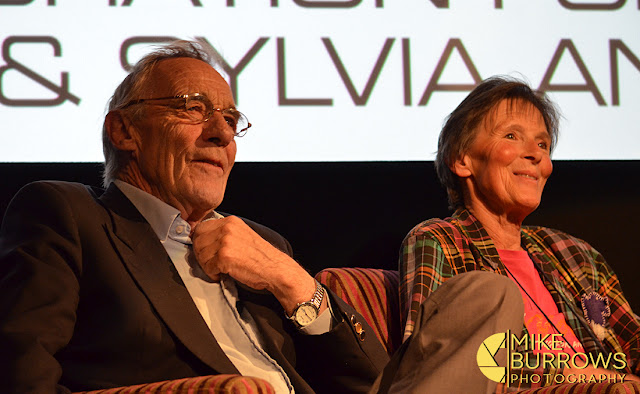Boredom is a terrible thing. In the small hours of sleeplessness, I often find myself surfing the airwaves for something to watch on TV. More often than not, I will choose one of my favourite films or shows to watch, as I invariably end up dozing off eventually. This week, due to the dearth of exciting media to grip my attention, I went back to an old favourite, something I know that will entertain and inspire me, even if the old eyelids begin to droop.
Robert Wise's 1971 adaptation of the Michael Crichton novel 'The Andromeda Strain' is high on my list of favourites, for a number of reasons. Although its borderline science fiction - as the events portrayed in it could easily happen - I find it an intriguing watch, which never fails to impress. The direction is crisp and edgy, there is no wasted space or time spent on pointless character development or exposition - Wise directs the actors almost like chess pieces, smoothly moving them from set piece to set piece. Equally, the cinematography is excellent, using odd angles and cut scenes to show multiple points of view at one time.
The central cast consists of a group of scientists, faced with containing and extra-terrestrial organism, which has been collected in space by a probe. The probe crash lands in Arizona near a remote town and is taken to the local doctor, who promptly opens the casing - and the exposed bacterial organism promptly decimates most of the townsfolk.
Only two survive the exposure and when a specialised recovery team arrive, they find a baby and an old man who appear immune to the lethal effects of exposure. The survivors and the probe are promptly removed to a top secret installation in the deep desert, named Wildfire.

Wildfire is a dedicated containment and research facility, situated over five levels deep underground, with each successive level being progressively more sterile and secure than the one above. At the base of the facility is a nuclear device, which in the event of an accidental breach, is designed to sterilise the entire area. As Andromeda Strain was filmed in the pre-computer era, Douglas Trumbull created faux computer graphics, such as the 3D display of the facility, using specially lit models. Cinematographer Robert Kline also faced many challenges filming the sets, due to the many high gloss steel reflective surfaces in the laboratories. Real world scientific equipment, such as the clean room 'waldo' arms were used on set, and due to the astronomical cost of the equipment, had to be kept under secure 24 hour guard.
Wise and Klein adopted a novel approach to filming the scenes, using special lenses, called 'split field diopters' which allowed fore and background elements to be in sharp focus simultaneously, such as this scene, where armed guards arrive at Dr Mills residence, much to the dismay of his wife.

The shot shows both of the military personnel in punishingly close focus, but also the MP in the background at the end of the drive, shouldering a firearm. Equally, when the scientists are helicoptered in to the small town and begin searching for survivors, as they peer in through windows and doors, the screen splits into multiple viewpoints, showing the viewer what the scientists are seeing at the same time as we watch them searching.
Trumbull also designed models and effects that simulated the microscopic organism itself, now codenamed 'Andromeda', attached to a tiny fragment of meteoric rock. Once more, the effects, considering they are all mechanical and optical, are stunning and we see the alien organism begin to grow and mutate on screen.
The film piles on the tension with the dual threat of the nuclear detonation and the evolving organism, leading to a nail-biting climax as the two elements collide. Overall, the film is presented as 'real life' events, with and introductory sequence detailing how the facts have been released as a matter of national security and the processes involved in the detection and containment of Andromeda are all scientifically and technically correct. Crichton won several awards for the novel and the film itself was nominated highly. Michael Crichton is probably best known for his Jurassic Park series, but also wrote many other 'techno-thrillers' such as Coma, Twister, Sphere, Congo, Westworld and Prey.
'The Andromeda Strain' was also filmed as a TV series in 2008, with Ridley Scott attached to the project, but differs wildly from the original book and script and is quite frankly appallingly bad, padding out all the characters with pointless backstory and schmaltzy pathos in order to fill in enough screen time for four cliche-ridden episodes, shoehorning in government conspiracies, mad military agents, rogue newspaper reporters and glamorous female assistants.
The American Cinematographer has a very interesting account of the filming and production of The Andromeda Strain and the images used here are taken from this article:




.webp)
.webp)
.webp)
.webp)







































